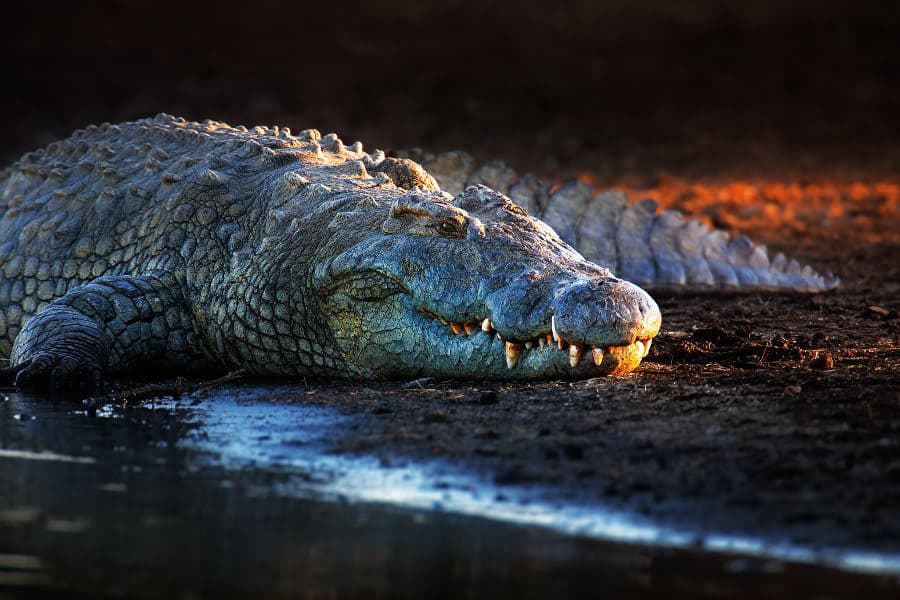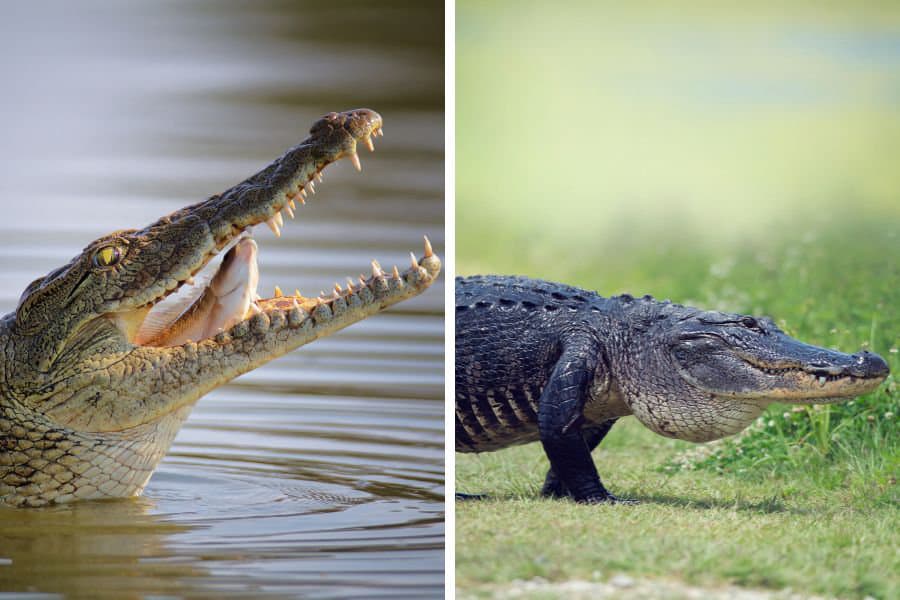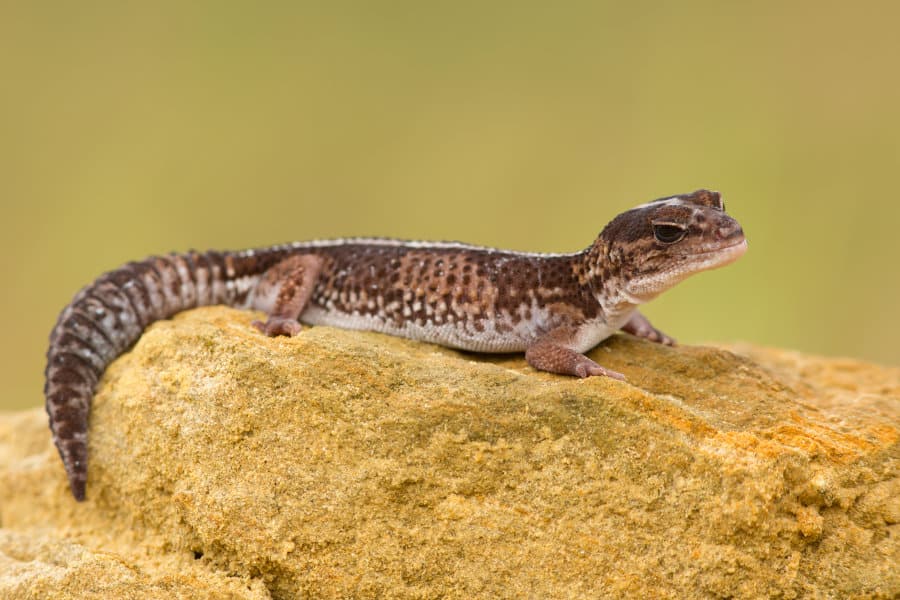The Nile river is not the only place you’ll find the Nile crocodile.
In fact, you can find Nile crocodiles in 26 African countries. So it’s not too difficult to encounter these magnificent reptiles in the wild.
The Nile crocodile has a fierce, some would argue sinister reputation, and probably for good reason. Not only are they the second largest extant reptile in the world, but unlike other predators, they don’t just hunt for food.
It’s estimated that this crocodile is responsible for hundreds of human deaths annually. Their jaws are eight times more powerful than a great white shark’s!
So how do you get close without getting too close? How and where can you admire these predators?
This article covers everything you need to know about Nile crocodiles, including their size, skulls, hunting ability and most intriguing facts.
A Background to the Nile Crocodile
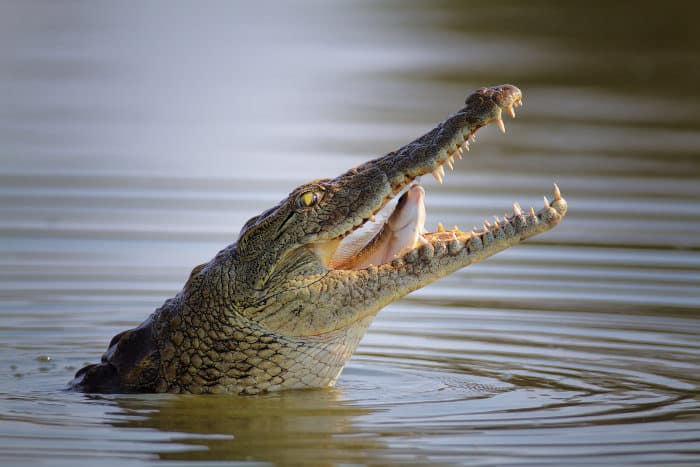
Crocodylus niloticus is the scientific name for the Nile crocodile and derives directly from the Greek words ‘Nile River’ and ‘Pebble.’ Pebble? It describes the animal’s scales.
The exact number of Nile crocodiles in the wild is unclear, but estimated to be more than 250,000.
They are not endangered, however their numbers are in steady decline. Nile crocodiles have a reptile super power in that they can live in both saline (salt) and freshwater, but you’re most likely to find them in freshwater.
This apex predator occupies the top of the food chain. They wouldn’t look out of place in the dinosaur era.
Their tough skin resembles body armour and is one of the most distinctive features. There’s a certain Nile crocodile in Burundi that, legend has it, was shot at by locals with machine guns and survived. His name is Gustave (more about him later).
These crocs will not turn down a free meal in the wild. Nile crocodiles have been known to take advantage of another wild animal’s kill, biding their time and grabbing the opportunity to steal.
Of course, they prefer a fresher alternative, but when needs must, they’ll do what it takes to survive.
Nile Crocodile Incredible Facts
- Their bite is eight times the strength of the great white shark.
- Both male and female crocodiles will gently crack open eggs using their tongue and upper palate to help hatching.
- The average male Nile crocodile is 5 m in length and weighs up to 750 kg!
- Crocodiles don’t cry while devouring their prey out of remorse – it’s simply lubrication!
The Nile Crocodile’s Nature

Nile crocodiles do not bite off chunks, like a great white shark. They ensnare their prey, never let go, and drown their victims.
These predators are patient and can lie in wait for hours, silent and unseen. This is one reason they are such successful hunters. They use very little energy and simply lie in the water, with only their eyes exposed, almost like ninjas.
Nile crocodiles have a varied diet, including fish, birds and large mammals. Essentially they’re not fussy eaters and will have a go at whatever is in striking distance.
A major factor in their hunting success is speed, both on land and in water. They might look like they’re fast asleep, but they can accelerate up to 17 km/h in just a few metres.
The Nile crocodile will spring into hunting mode and instantly grab any part of their prey’s body. With such incredible jaw strength, it’s not surprising to learn that once their prey has been snared, it’s almost impossible to break free.
Another of their unique hunting attributes is conical or cone-shaped teeth. This helps keep a firm grip on the prey when the crocodile dives down to drown its prey.
The Nile crocodile is very social
Social order matters to the Nile crocodile and it is fiercely respected, perhaps something we humans can take note of.
A group of crocodiles is called a bask. Sometimes a group of crocodiles is called a float, or also a congregation. (More interesting group animal names here).
Age and size features highly, so the old males take their place at the top of the hierarchy. Younger crocs crossing the line within the bask suffer serious consequences.
For such fearsome predators, it’s surprising how social they can be. Nile crocodiles are known to share their sunning spots with one another, as long as social rules are observed. They’ll also share large kills with the rest of the bask.
The mating ritual
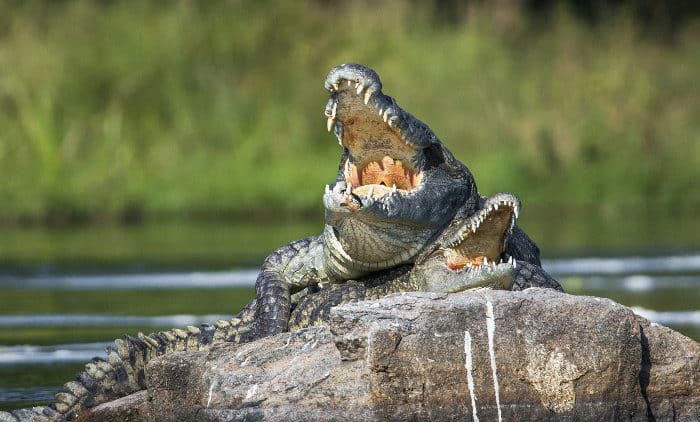
Mating rituals are rather animated, and spectacular but rare to encounter.
The male crocodile will bellow and shoot water from its nose to get the female’s attention. They also slap their nose on the water, which is quite the spectacle if you get to see it.
The female will take her time, but when she accepts the advances from a male, the demonstration of affection is adorable. Mating Nile crocodiles make a melodic, trilling sound while rubbing their jaws together.
Perhaps you weren’t expecting the cute and cuddly from this apex predator!
The Female Nile Crocodile
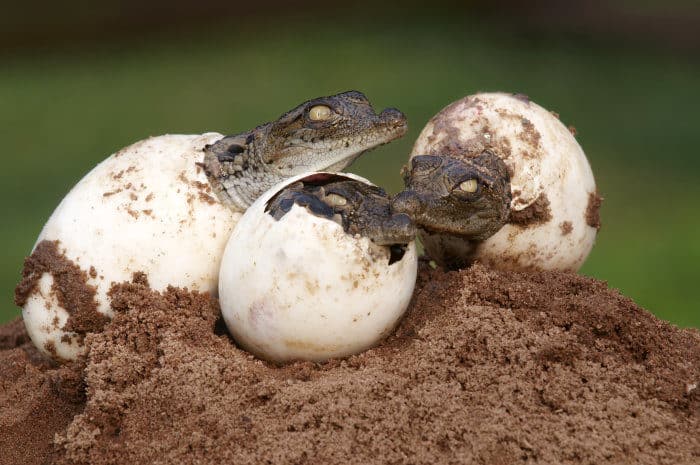
Female Nile crocodiles are smaller than their male counterparts. They will reach sexual maturity from age 12 and generally only nest every two years.
During breeding season, the female crocodile will dig holes about 50 m away from the water to lay her eggs. She will lay between 60 to 80 eggs and they incubate for 80 to 90 days. The female crocodile won’t venture far from her eggs during this time, to ensure other predators don’t eat them.
Once the baby crocodiles are hatched, the mother will carry them to the water herself. Another great example of their social structure is how females come together to form a creche. Young Nile crocodiles will stay with their mothers for the next two years.
The Largest Nile Crocodile

Meet Gustave, the man-eating serial killer Nile crocodile living in Burundi. His exact length is unknown, but it’s estimated to be more than 5.5 meters, and his weight more than 900 kg.
That’s quite a bit more than the usual Nile crocodile. But this guy hasn’t been seen since June 2015, so nobody knows for sure.
Numerous attempts have been made to capture or kill this man-eating Nile crocodile. Legend has it that this crocodile alone has ended the lives of more than 300 people. And it’s said that they weren’t killed for food!
Not even machine gun bullets seem to stop this crocodile in his tracks, or so the legend goes.
For those brave enough, you’ll need to journey to the northern shores of Lake Tanganyika and the Ruzizi River to search for this crocodile. The less adventurous (i.e. not crazy) can learn more about Gustave from a movie based on his exploits.
Let us know your opinion if you actually watch the movie – we think it’s dramatized nonsense that only serves to stereotype Nile crocodiles as dangerous and frightening, not incredibly evolved creatures to be respected.
Gustave is estimated to be 64 years old now but it’s not age that hinders his hunting. It’s his size. Being this large makes him less agile and therefore unsuccessful at hunting smaller animals such as fish or antelope. This means that he has no alternative but to hunt larger animals like hippos and lions.
Nile Crocodiles in Florida

Florida, USA is quite a distance from Africa, so it’s quite a mystery as to how the Nile crocodile arrived in Florida. In 2009, 2011 and 2014, Nile crocodiles were captured by scientists in Florida for testing. The results concluded that these crocodiles had indeed originated from South Africa.
Even though the legal import of non-native species is not uncommon in the USA, it’s thought that the illegal exotic pet trade is most likely to be responsible for the arrival of Nile crocodiles in Florida.
National Geographic called them “Florida’s newest invader.” We’re pretty sure they were happy enough in South Africa. Any human fatalities at the hands of these crocodiles is probably just a form of compensation. They’re not invaders – they were kidnapped!
Nile crocodiles are much larger than American crocodiles, so it’s not surprising that they were easy to spot. Their size is one difference, their temperament another. The American crocodile is considered far less aggressive towards humans than the Nile crocodile.
Given the speed at which the Nile crocodile grows and their ability to adjust quickly to new environments, it’s not surprising that a big “Welcome” banner wasn’t rolled out at the discovery of Nile crocodiles in Florida.
Nile Crocodile vs Saltwater Crocodile
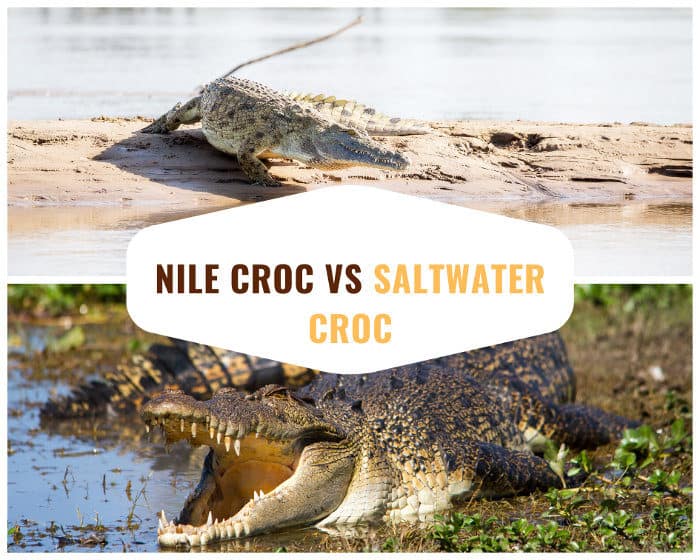
Let’s look at some of the key differences between Nile crocodiles and saltwater crocodiles.
- Weight
> Nile crocodiles up to 1000 kg
> Saltwater crocodiles up to 2000 kg
- Species
> Nile crocodile [Crocodylus niloticus]
> Saltwater crocodile [Crocodylus porosus]
- Visual difference – Scales
Nile crocodiles have larger and fewer scales.
Saltwater have small and round scales.
The saltwater crocodile is a beast of an animal and thought to be the largest of the crocodilians. And it has the power to match its size.
Salties, as they’re more affectionately called, can be found from India‘s eastern coastline up to Australia‘s North Coast. They use their tails to launch their bodies out of the water when required.
The saltwater is the closest relative of the Nile crocodile.
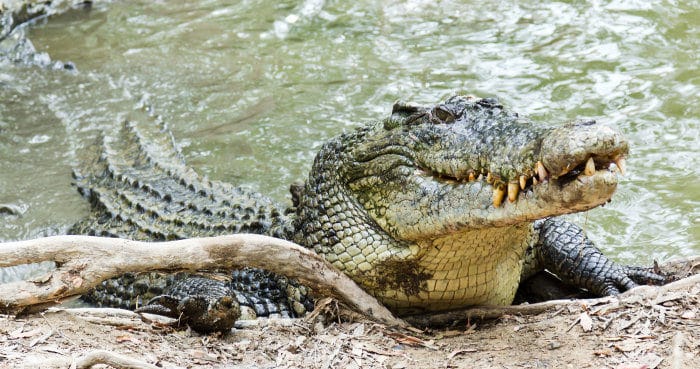
Far less social than the Nile crocodile, the saltie won’t tolerate any other males in their territories, only females. The saltwater crocodile is also super strong, known to have the power to take down a grown buffalo of over 1000 kg.
Once it’s got a hold of prey, the saltie will pull it into the water and tear it apart with a powerful rolling action. This rolling action is often referred to as “the death roll”.
Top tip: Don’t try and outswim the saltwater crocodile. They can swim as fast as some dolphins, reaching up to 29 kmph.
You should always avoid the saltwater crocodile, but should you ever find yourself in a sticky situation, here are some top tips from people who have survived encounters with these apex predators. We hope you never have to use these, but if you do…
On land
- Don’t make any sudden movements
- Run away from the animal, always in a straight line (good luck)
In water
- Try not to splash the water
- Go for their eyes
- Fight like crazy
Nile Crocodile Skull
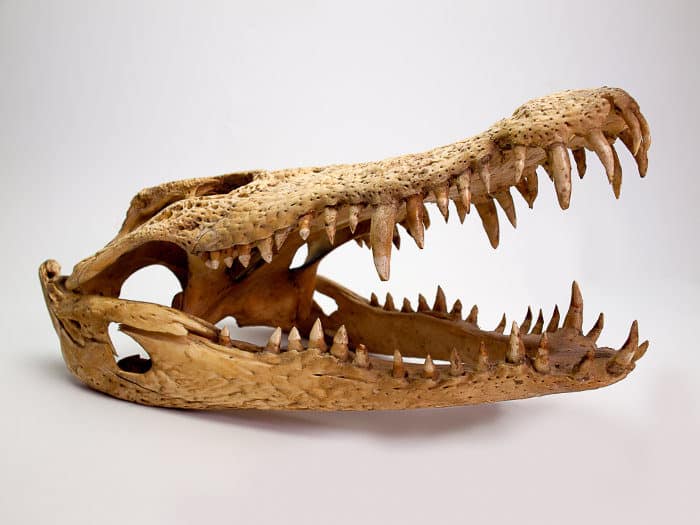
Worthy of individual fame, the skull of a fully grown Nile crocodile male can be longer than 60 cm. It needs to be given it must hold up to 68 teeth. The skull of the crocodile is a prized trophy and often the reason these incredible animals are hunted.
The Nile crocodile skull can weigh over 160 kg alone!
Their teeth are often referred to as the strongest in the animal kingdom. The Nile crocodile shares this accolade with one other animal, the saltwater crocodile.
The bite force measures between 3000 and 5000 psi, more powerful than any other predator.
Encountering Nile Crocodiles in the Wild
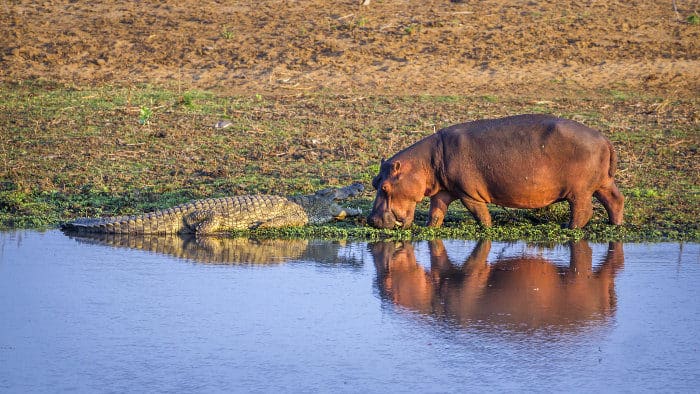
Found in 26 African countries, Nile crocodiles can be an easy animal to spot. And not just on an African safari.
You will find them in many rural rivers and lakes, especially across East and Southern Africa.
When crocs are in the water you will usually only see their eyes and snout poking above the surface.
Often you will see them basking on a riverbank, seemingly asleep. Don’t approach, because faking sleep is part of their hunting technique.
The Future of Nile Crocodiles
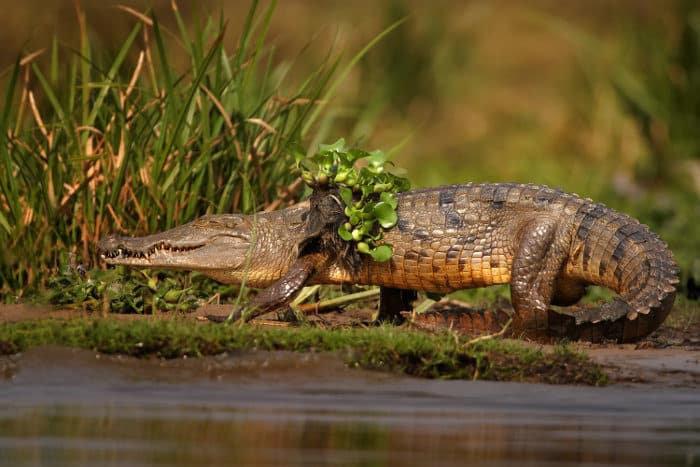
Unlike their cousins in the crocodile family, Nile crocodiles can live to a ripe old age of over 70 years old. This number may be reduced in the wild due to habitat loss, which is by far the biggest threat to these magnificent animals.
Environmental changes also play a part in the reduction of wild Nile crocodiles. Decreasing wetland areas, human development, and the impact of dams play an additional role in a declining population.
Then there is hunting. Crocodiles in general are much sought after hunting trophies, for their skins and their skulls.
Given their reputation, it’s understandable that Nile crocodiles are not the easiest of animals to fall in love with. Studying them is a dangerous task, but without the dedication of herpetologists (someone who studies reptiles) we might fear these animals even more.
The Nile crocodile deserves our respect and not just because we fear them. An early cousin of the Nile crocodile was an upright walking beast called Carnufex carolinensis. These guys walked and (some would argue) terrorised the earth more than 230 million years ago.
And if you need more reasons to be in awe of these animals, consider this. 65 million years ago, a little event called the K-T extinction wiped out all the dinosaurs from the face of the earth.
All except their direct relative – the Nile crocodile.
